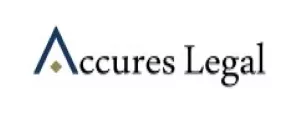(2024 SCC OnLine Del 2317)
Google LLC submitted a patent application titled "Managing Instant Messaging Sessions on Multiple Devices" to the Controller of patents and designs on July 13, 2007 and claimed priority from a US patent application. The application disclosed the feature for transferring instant messaging sessions concurrently between devices and a user preference to mirror sessions while in an idle/away state.
The Controller issued a First Examination Report dated 25th November, 2014 citing three prior art documents listed below and raised the objections of lack of novelty and inventive step under Section 3(k) of the Act. Other objections regarding insufficiency of disclosure, lack of clarity, and other procedural issues were also held.
- D1: US2003101343 titled 'System for providing continuity between messaging clients and method' – May 29,2003
- D2: US2004068567 titled 'Method and system for transferring a computer-sessions between devices' – April 8, 2004;
- D3: US2003055977 titled 'System for automated, mid-session, user-directed, device-to-device session transfer system' – March 20, 2003.
To address the objections of lack of novelty and inventive step, the Appellant submitted that the prior arts lacked the features of (i) interruption to mirroring, (ii) mirroring the sessions during idle state and (iii) ceasing of instant messaging based on user preference when the message controller is in idle/away state. With regards to the objections under section 3(k) of the Act, the Appellant claimed that the subject patent involved technical steps enabled by hardware features which resulted in a technical effect. However, the application was refused by the Controller under section 15 of the Act, citing the above-mentioned objections. Aggrieved by such order, the Appellant filed an appeal in the High Court of Delhi.
The following issues were to be determined by the Hon'ble Court in the appeal filed.
- Whether the rejection of the Appellant's patent is sustainable or not?
- Whether the subject invention satisfies the other tests of novelty, inventive step and industrial application and is entitled to the grant of patent protection?
The Appellant submitted that the entire premise of the objections of the Controller was based on the teachings of the prior art document D1. The two major features of the subject patent (i) preference of users to cease instant messaging while their devices are in an idle stage and (ii) user's conscious choice to trigger such messaging feature were not disclosed in the prior art document D1, which related to mere transmission of messages between two devices.
The Controller submitted that on the basis of the prior art, a skilled person in the art can extrapolate from existing functionalities and develop a conscious feature for mirroring messaging sessions during idle or away states. It is a mere logical progression and foreseeable evolution of the messaging communication systems.
The prior art document D1 showed that there was a user need for the ability to access messaging platforms from multiple devices without a loss of continuity. D1 sought to patent an invention which remedied such need.
The HC referred to various judgements reflecting on tests for assessment of inventive step and obviousness. In Avery Dennison Corporation v. Controller of Patents and Designs[2022/DHC/004697], the guidelines for satisfying the test of obviousness were laid down. (i) Obvious to try approach, (ii) Problem/solution approach, (iii) Could-Would Approach, (iv) Teaching Suggestion Motivation (TSM test).
The tests laid down in Windsurfing International Inc. v. Tabur Marine Ltd[[1985] RPC 59] were modified in Pozzoli Spa v. BDMO SA[[2006] EWHC 1398 (Ch)] and these include to identify the skilled person, its relevant general knowledge, inventive concept, difference between claim and prior art, to view if those differences are obvious to a skilled person or if they require some invention.
The UK Supreme Court in Actavis v. ICOS [[2019] UKSC 15] identified the relevant considerations for assessing obviousness which include (i) whether the claimed invention was obvious to try at the priority date, (ii) if it follows the routine nature of research, (iii) burden and cost of the research programme, (iv) necessity and nature of value judgments the skilled team possess during the testing programme, (v) existence of multiple paths of research, (vi) motive of the skilled person, (vii) if result of research is unexpected, (viii) absence of hindsight, which includes knowledge of the invention, (ix) whether a feature of a claimed invention is an added benefit.
Hence, the Controller has to analyse as to what is the existing knowledge and how the person skilled in the art would move from the existing knowledge to the subject invention. Such analysis is to be considered before, the rejection of the patent application under Section 2(1)(ja) of the Act.
In the present claim, although the word mirroring is not used in the prior art document D1, the purpose of the subject patent and the prior art is to view instant messaging sessions on multiple devices. The 'preference' that the subject patent contemplates is merely one additional command which the prior art would also enable a skilled person to arrive at.
The feature of providing a preference of mirroring to the user is implied in the prior art as transfer of session data from one messaging client to another is a fundamental aspect of mirroring. With regards to the feature of a choice to mirror the messaging session on multiple devices, the prior art mentions the transfer of messaging sessions between different account users, which aligns with the concept of mirroring a session.
To summarize, while the subject patent provides for a preference, the core concept of managing sessions across multiple devices and the flexibility of using user-defined settings are already present in the prior art document D1. A mere automation of the process cannot be held to be inventive.
The Controller submitted that a corresponding EPO application filed by the appellant which they claimed to be abandoned was rejected and it comprised of not one but two applications, including a divisional application. Both the applications were rejected for lack of novelty and inventive step. The Appellant in the present appeal presented wrong facts to the Court and failed to disclose the information regarding the refusal of the EU parent application and the divisional application filed.
Accordingly, due to non-compliance with the disclosure requirements, the appeal was dismissed with costs of Rs. 1 lakh upon the Appellant.
The content of this article is intended to provide a general guide to the subject matter. Specialist advice should be sought about your specific circumstances.



